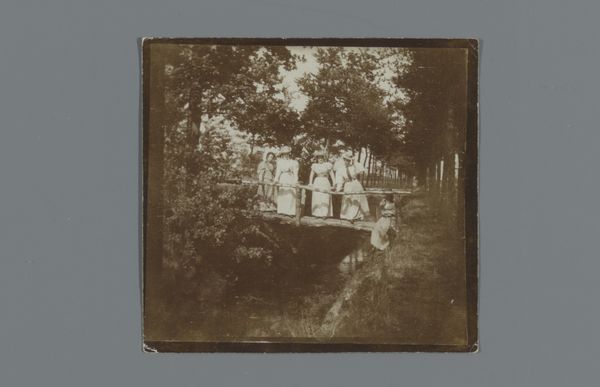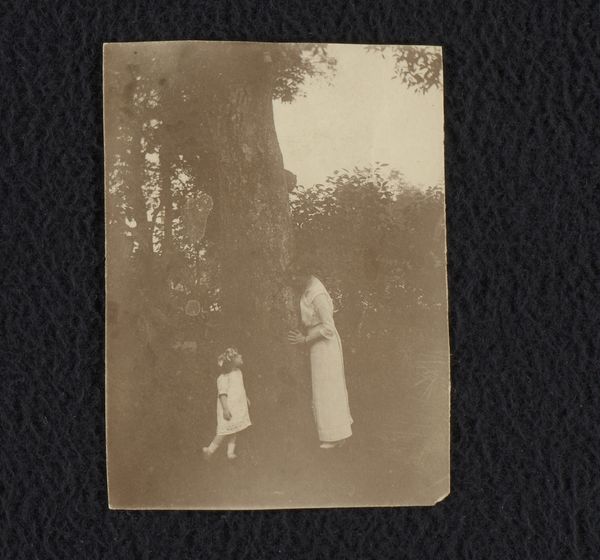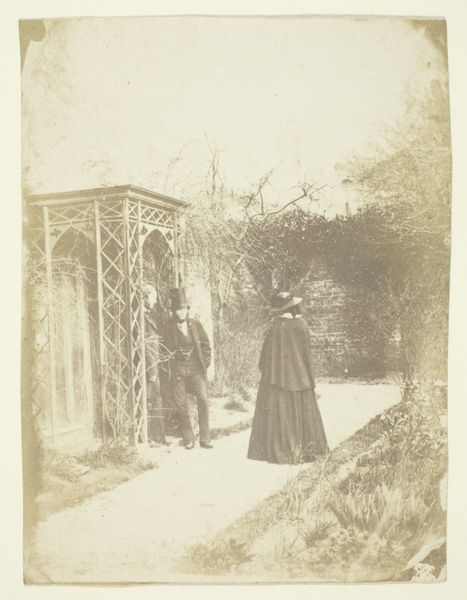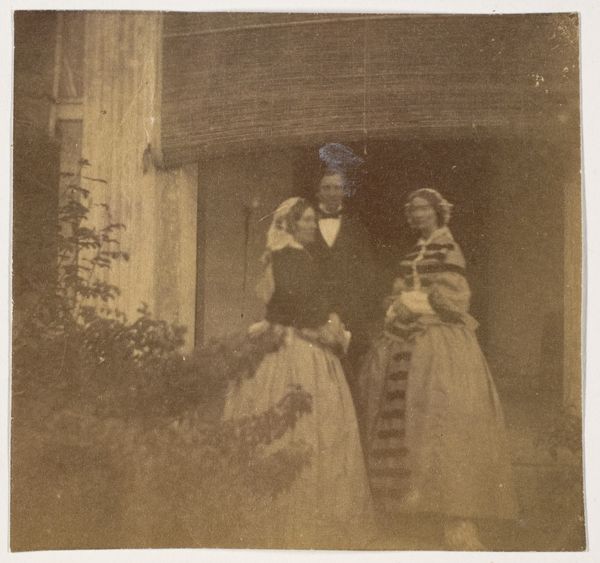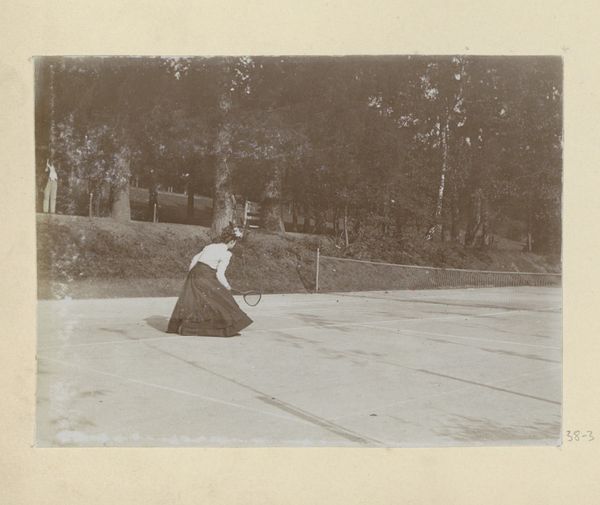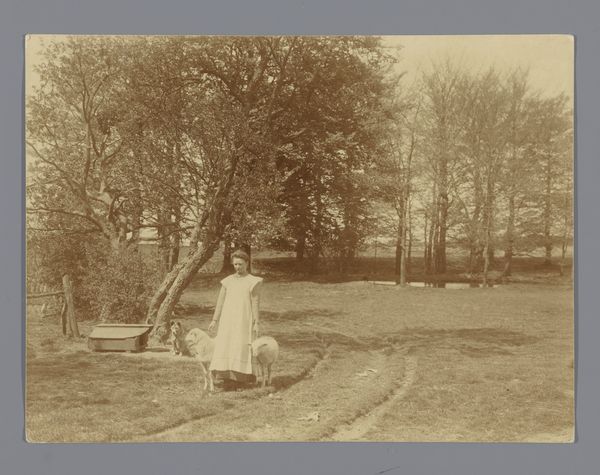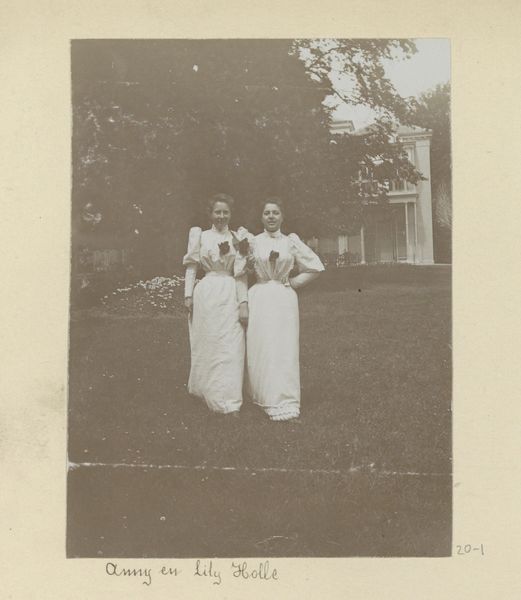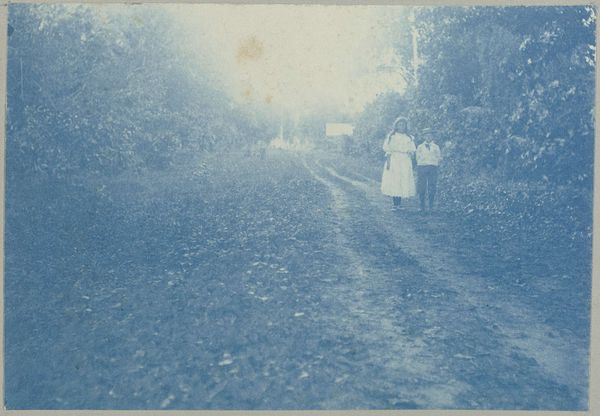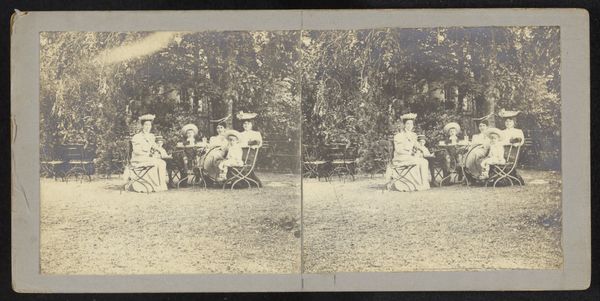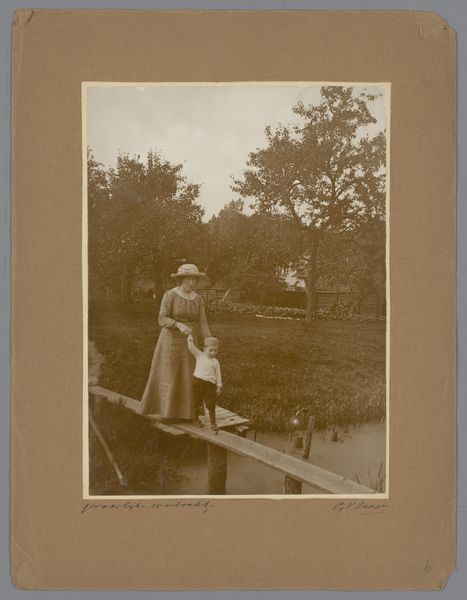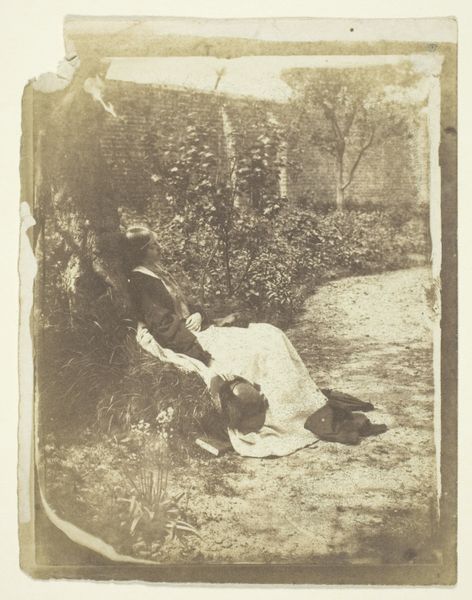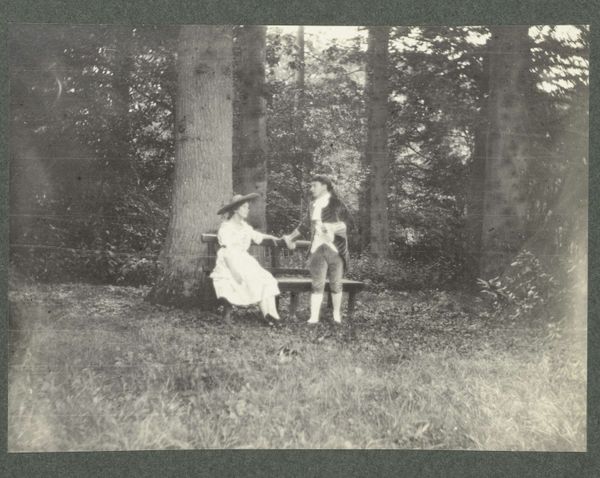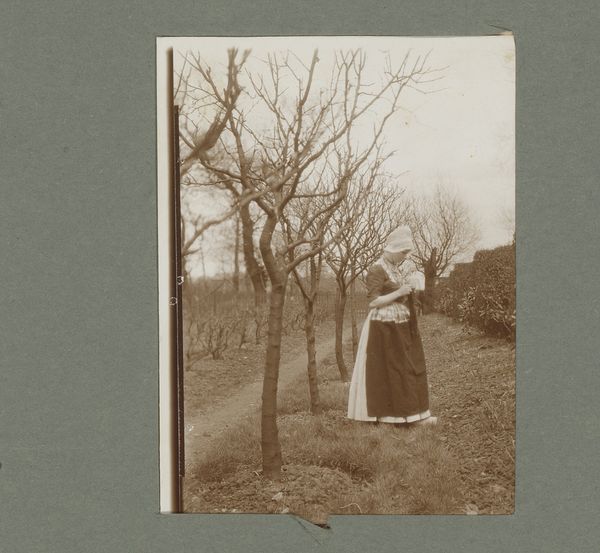
photography, gelatin-silver-print
#
portrait
#
pictorialism
#
landscape
#
photography
#
gelatin-silver-print
#
genre-painting
#
watercolor
Dimensions: height 91 mm, width 95 mm
Copyright: Rijks Museum: Open Domain
Curator: This is A.C.M. Geertsema's "Geertsema Girl and Friends on an Outing," a gelatin-silver print from around 1900, a wonderful example of pictorialist photography. The tones, the composition... It really holds together as a constructed scene. Editor: There's a distinct sense of suspended action, a certain tension. The light feels dreamlike, almost melancholy. I wonder what draws these women towards this fence. It suggests constraint, but the natural light suggests an openness, as if nature is available but something is separating these characters from their desires. Curator: Note how the fence functions pictorially: The strong horizontal, almost bisecting the composition, with the darker tones of the women above meeting the grainy and less contrasty surface beneath them. The tonal gradation is masterful. The use of light creates spatial depth, particularly with the blurred backdrop of the forest and the overcast sky. It lacks the high contrast often found in other portrait photography. Editor: The clothing choices contribute to the image's meaning, don’t you think? Both girls seem to wear pure white or off-white long dresses that signal a possible loss of innocence, and connect to mourning customs of the Victorian period. There is something slightly morbid or gothic to this whole experience, the kind of narrative that may lead us into an experience of encountering ghosts in a landscape or seeing them within the self, confronting the unconscious. Curator: Indeed, one is drawn in by the composition's subtleties and the tonal arrangements first; it speaks more of carefully controlled photographic design than the spontaneity we might assume from genre painting. Editor: Do you see them more as subjects carefully placed or as figures performing symbolic gestures within a larger tableau of nature and selfhood? This reminds me that the end of the 19th century brought with it great anxieties about loss of connection to traditional cultural myths in the West, which is being compensated through individual experiences of self-transformation and discovery in art and psychoanalysis. Curator: I would argue Geertsema carefully balanced both of these elements. I wonder if his choice of monochrome reflects a concern with objectivity, even while dealing with subjective themes. Editor: It makes me think about how often pictorialism offers a safe return to the inner life and an opportunity to grieve losses. The monochrome helps unify the emotion of the subjects, perhaps a collective emotion about loss and impermanence. Thank you, that was incredibly illuminating to consider how even seemingly transparent modes of visual creation conceal sophisticated strategies of visual messaging. Curator: My pleasure. A fruitful exercise, indeed, to explore the depth beneath the surface.
Comments
rijksmuseum about 2 years ago
⋮
Initially photography was a hobby for young men and women from affluent families who could afford a camera with accessories. In one of these photographs we see Dien Geertsema balancing on a tree trunk during a walk in the woods near Hilversum. The camera was also called ‘the constant companion’ of life.
Join the conversation
Join millions of artists and users on Artera today and experience the ultimate creative platform.
